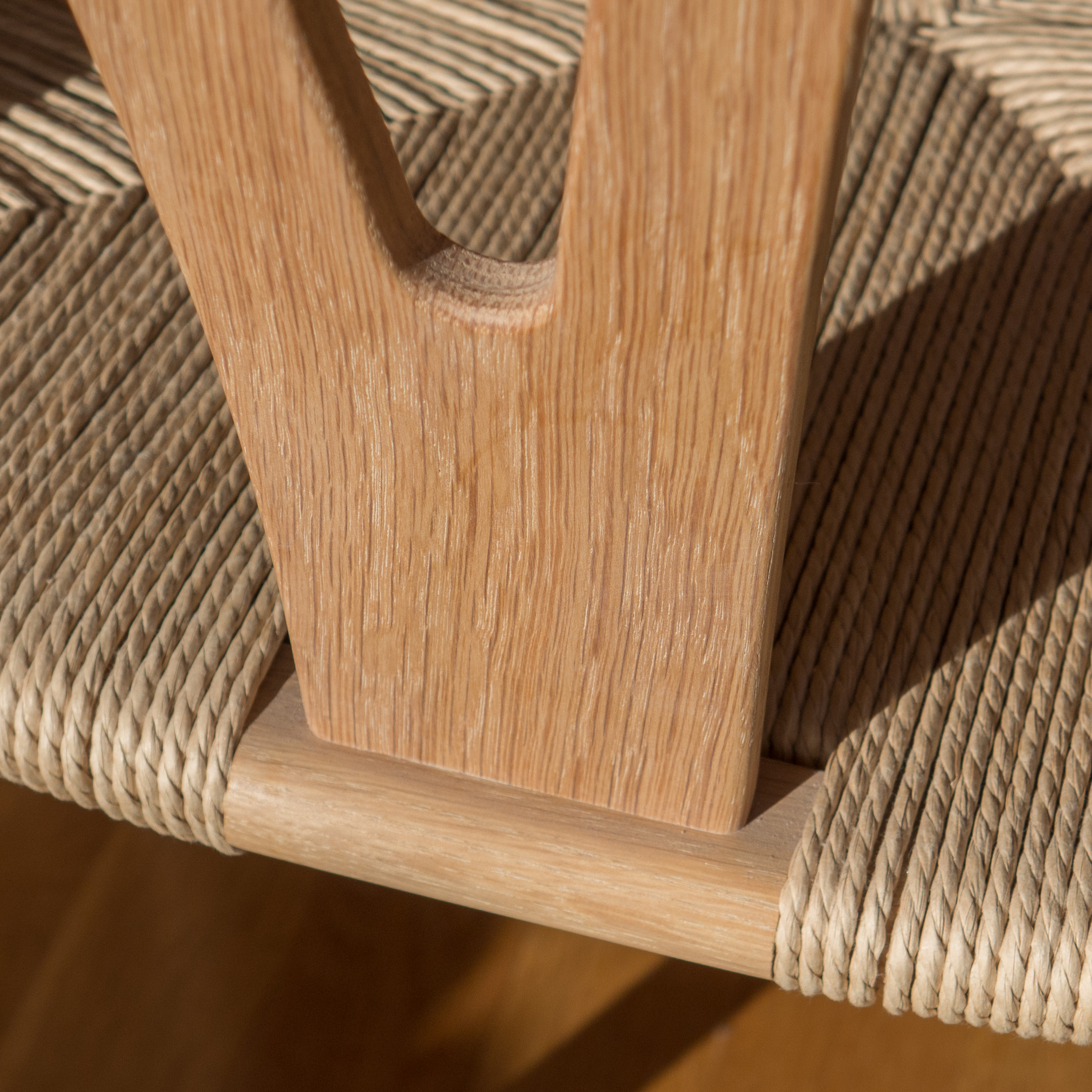the paper cord seat of a Wishbone chair
/The Y-stolen or Wishbone Chair was designed by Hans Wegner and has been produced by the Danish company Carl Hansen & Son since 1950.
The distinctive features of the design include the curved back rest then sweeps round into arm rests as a development of an earlier chair - the Chinese Chair - designed by Wegner and this is supported at the back by a thin Y-shaped splat that gives the chair its English name.
The seat is woven paper cord or Danish Paper Cord ... a material linked particularly with designs by Wegner but used by many designers in the classic period of modern Danish furniture through the 1950s and 1960s.
As on many chairs, the back of the seat is narrower than the front of the seat - which means that the side rails are not parallel - so weaving the seat starts with extra turns of cord around the front rail. On the Wishbone Chair, the front seat rail is 41cm wide, between the front legs, while the distance between the back posts of the chair is just 34cm so there are ten initial turns around the front rail of the seat on each side with the eleventh taken straight back to the back rail hard into the angle against the back leg post to start the weave proper.
When the seat is completed this form of weaving creates the distinct open wedge shape at the outer ends of the front of the seat.
Taking the cord across and back, the weave forms the characteristic X on the top and on the underside - rather like the X like you see on the back of most paper envelopes - but the pattern of weaving on Wishbone Chairs is actually not as straightforward as it appears - a simple cord taken straight across and over and then returning on the underside - but actually forms three layers with the cords of the middle layer running at right angles to the direction of the cords on the top and the underside.
Wire staples are used at some points to keep tension tight at crucial stages of the work .
The weaver works from the outer rail inwards and joins in the cord are tied off with knots on the underside.
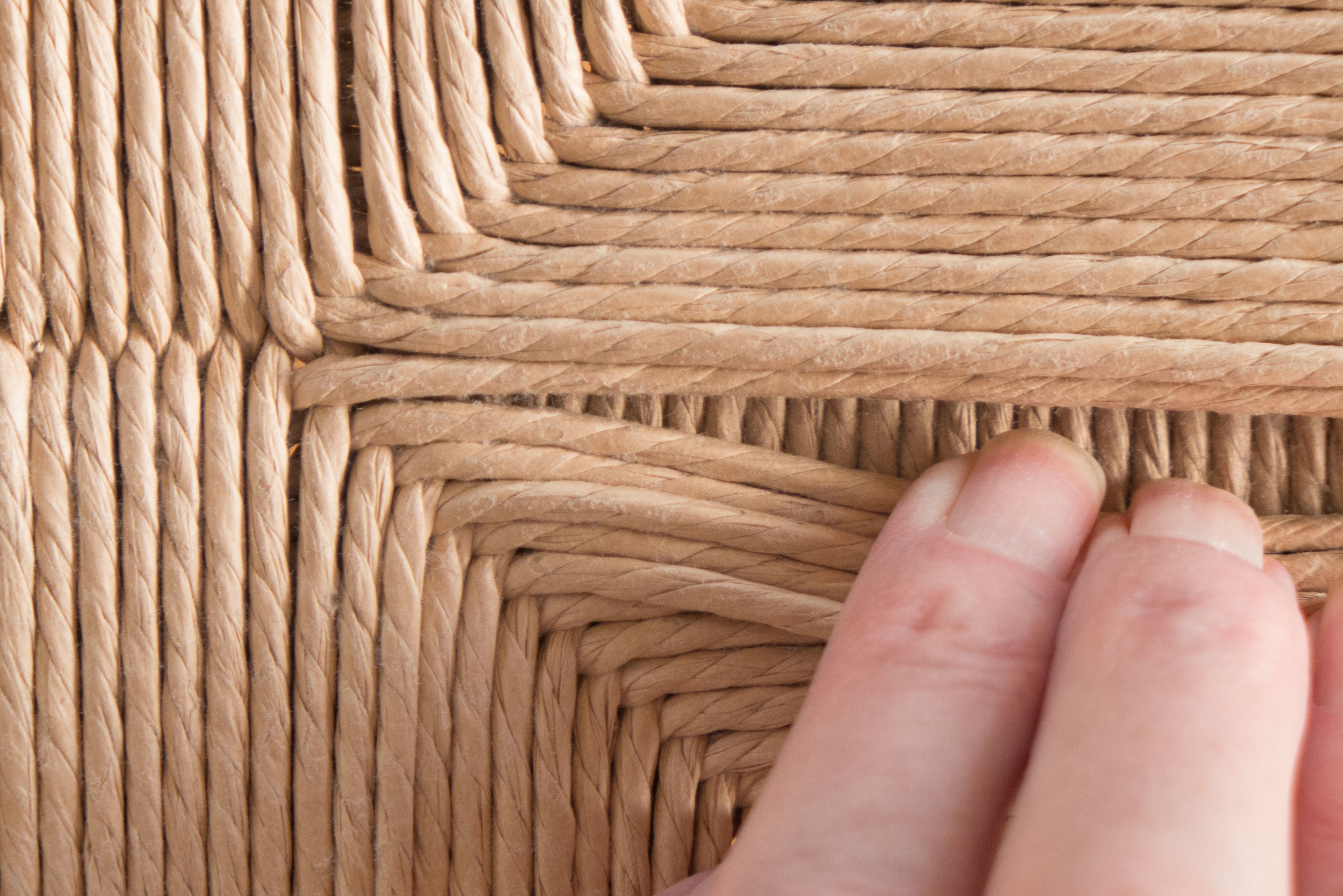
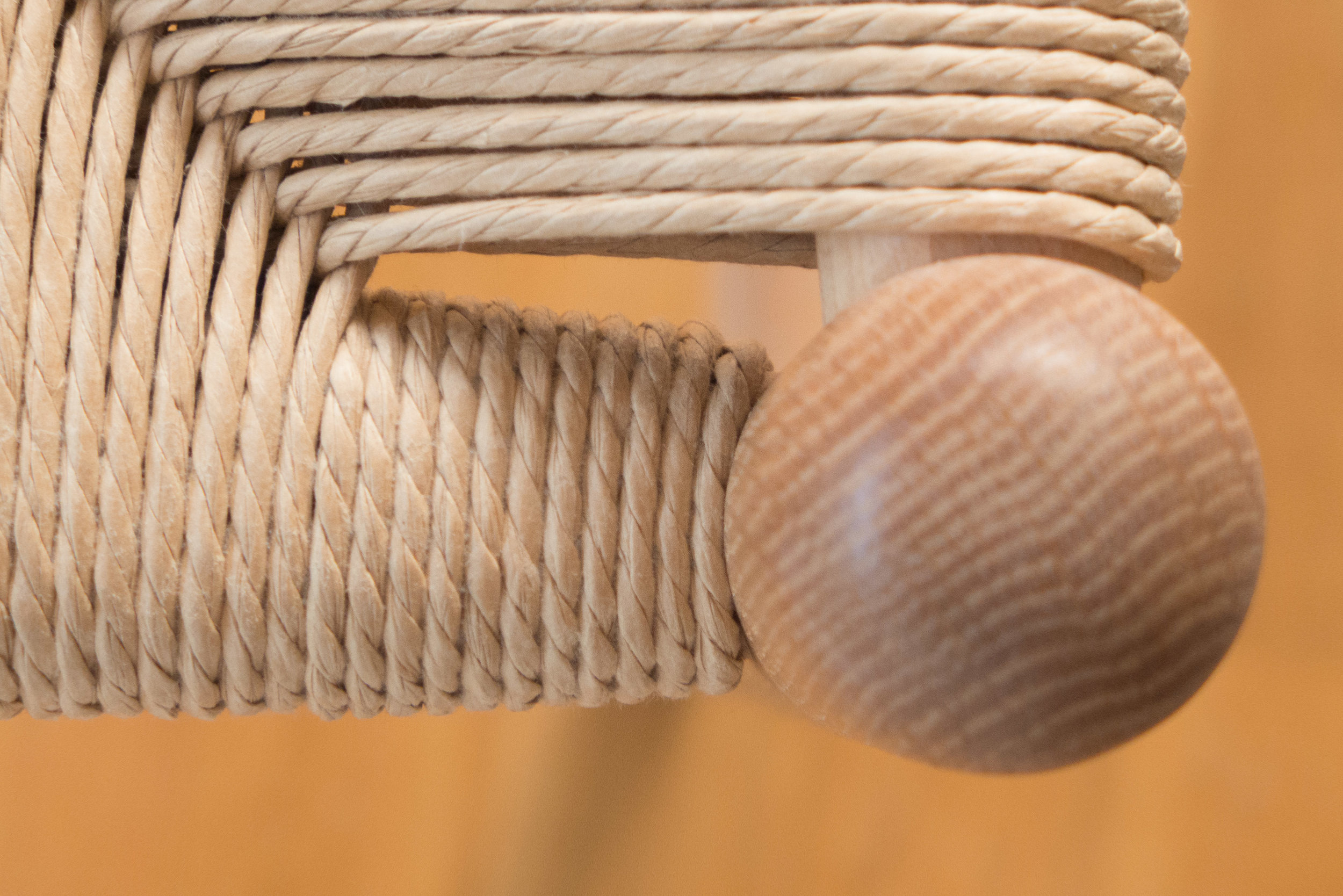
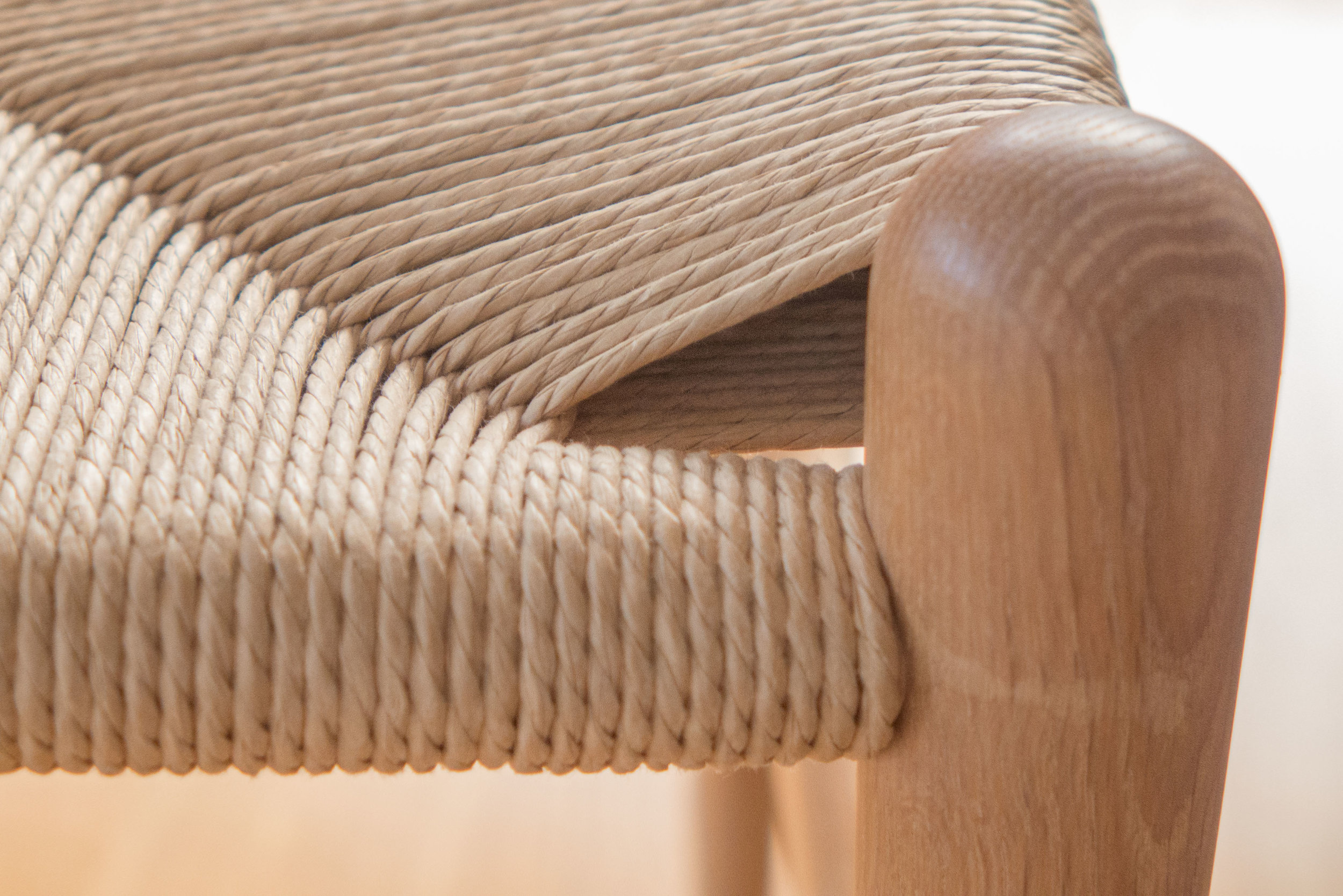
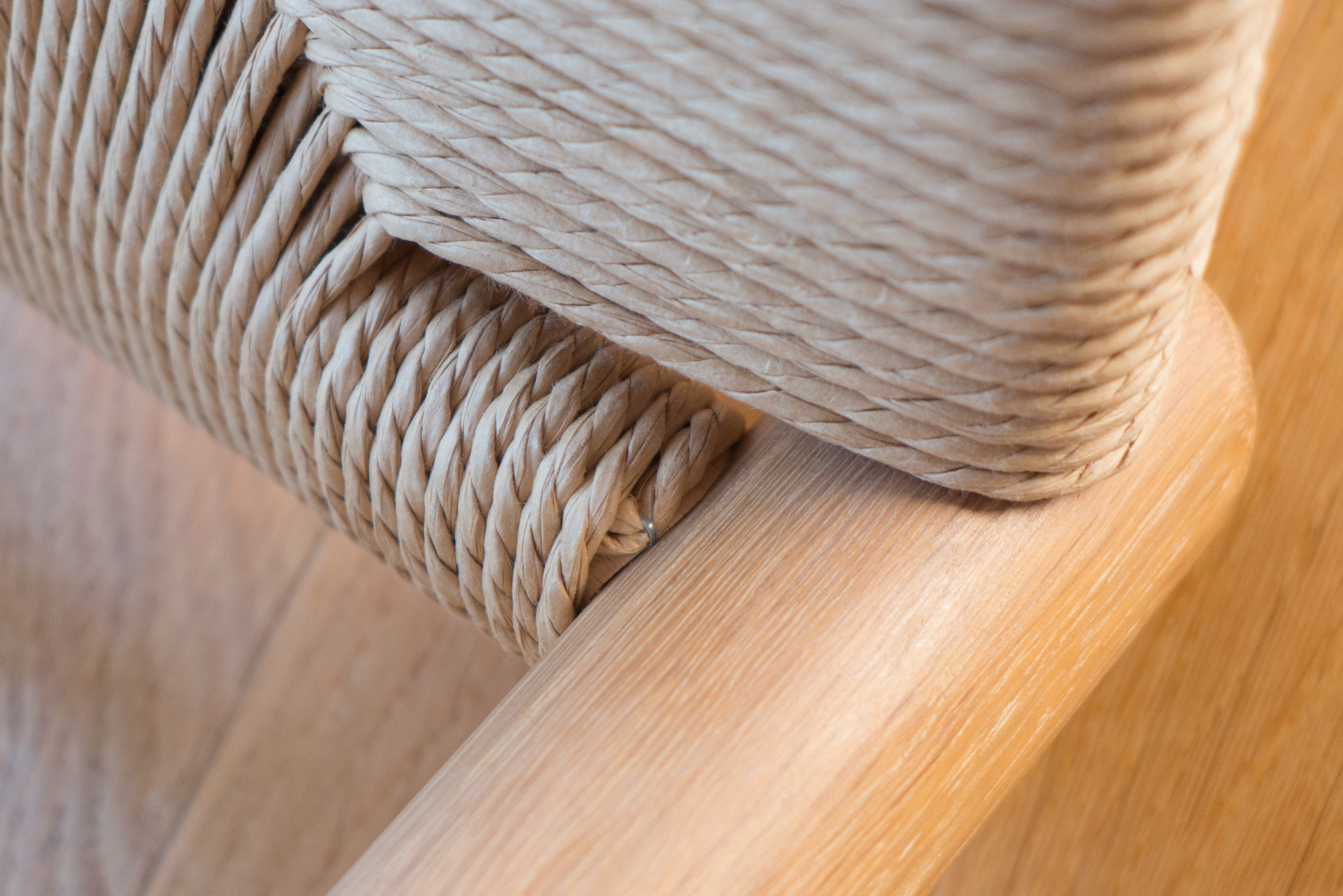
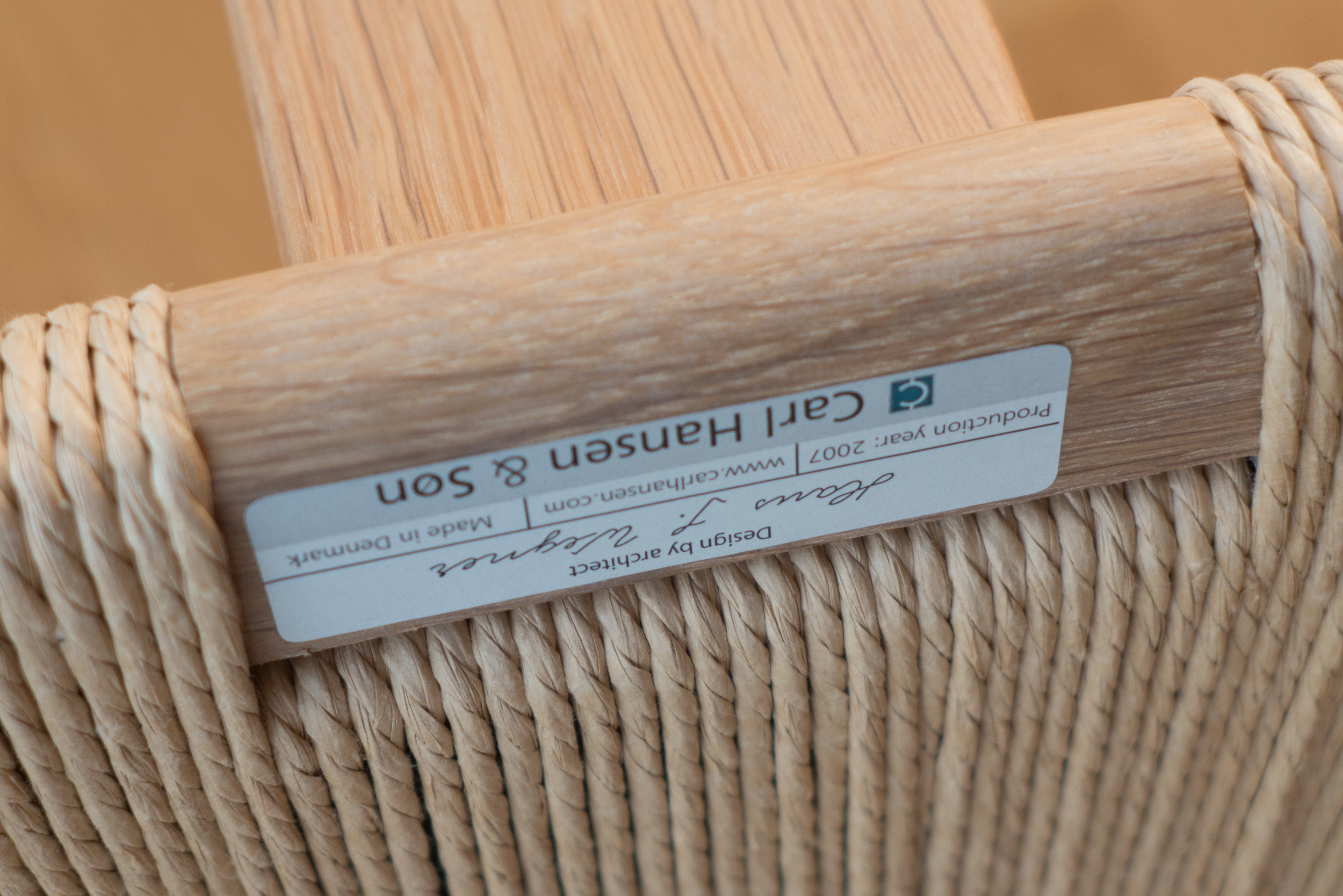
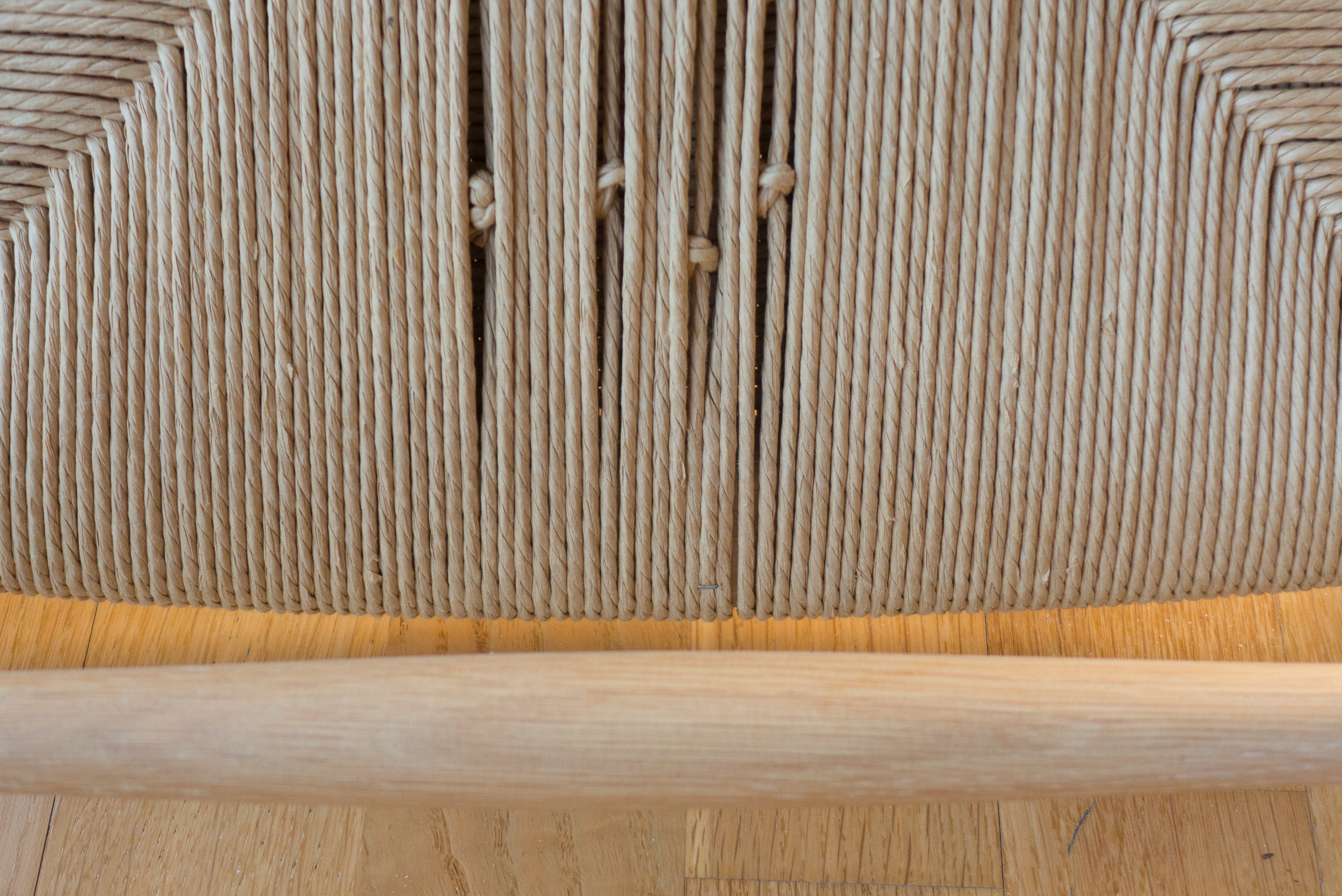
- the seat cords from above showing the intermediate layer of cords running across
- extra cords wound around the front seat rail to bring the first cord to run back square to the inner corner of the narrower back rail
- the extra turns of the first cord and the position of the side rail of the seat - set higher than the front rail - forms this distinctive triangular gap
- the cord around the front leg from below ... note the small metal staple holding the first cords in place
- in front of the splat of the back, there is a slot cut down through the back frame of the seat and the cords are taken across the seat, down the slot and then return back under the seat
- joins in separate lengths of cord are tied off with the knots on the underside
There is an earlier post about the Wishbone Chair with a more detailed description.

